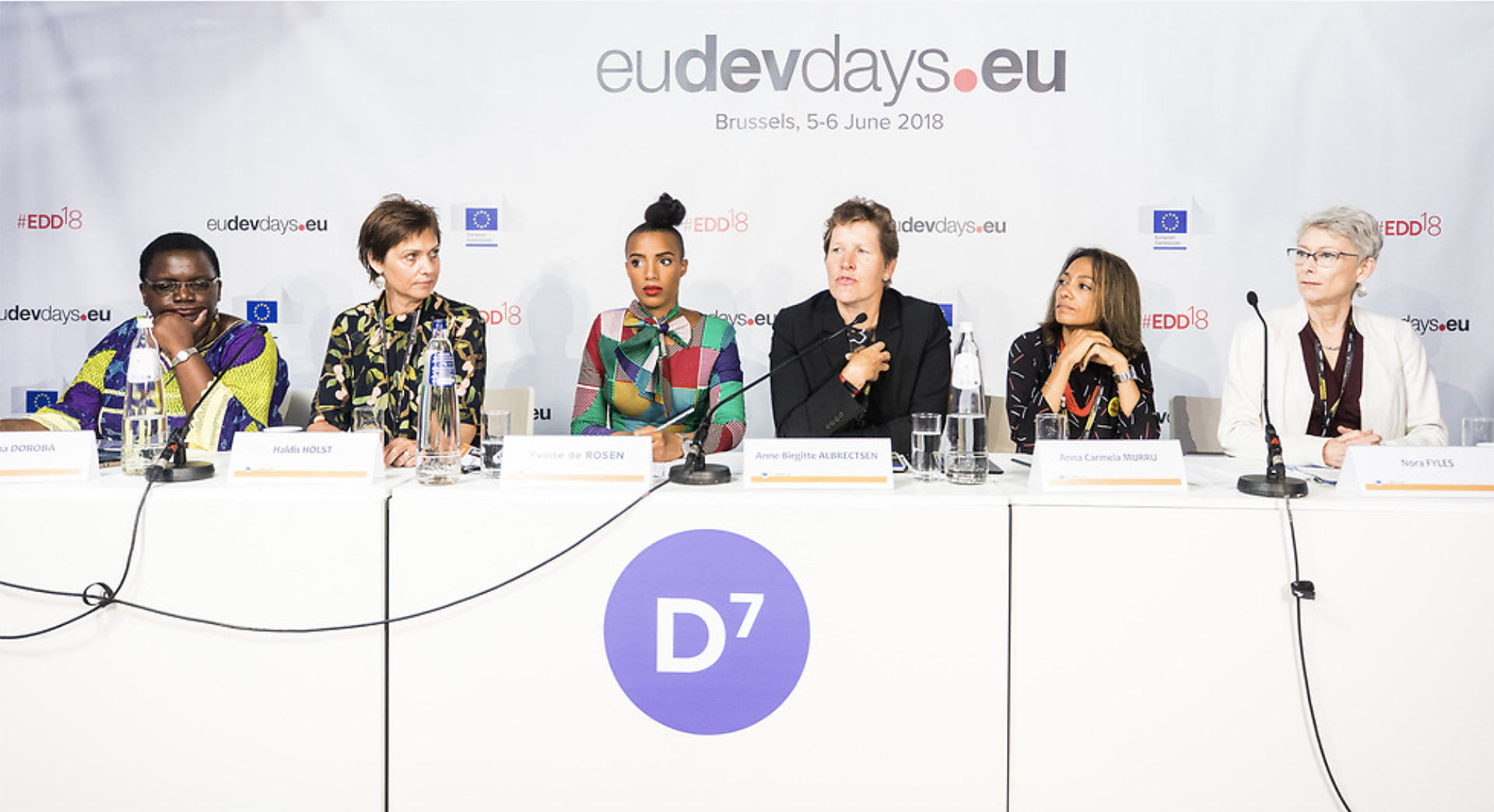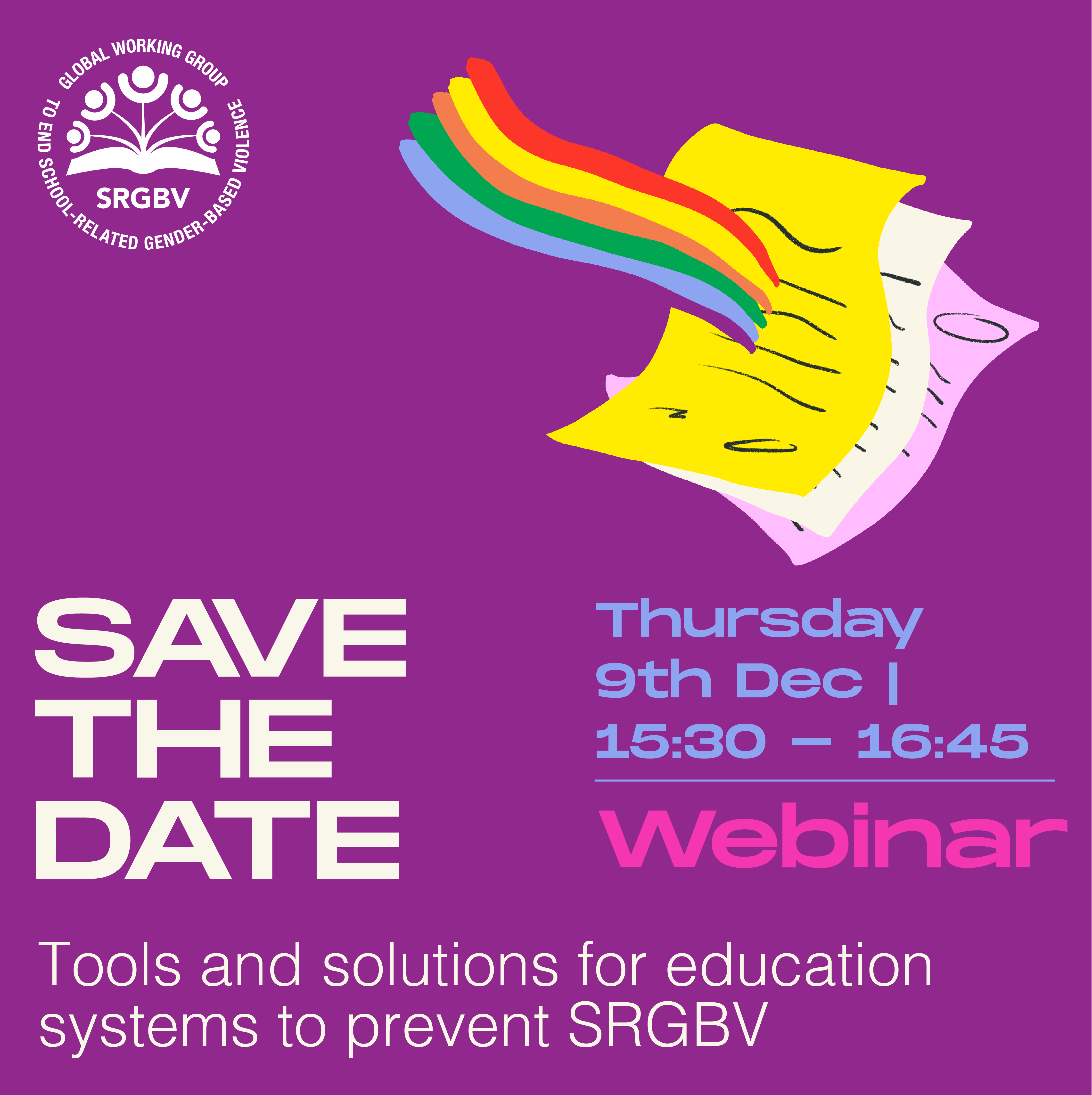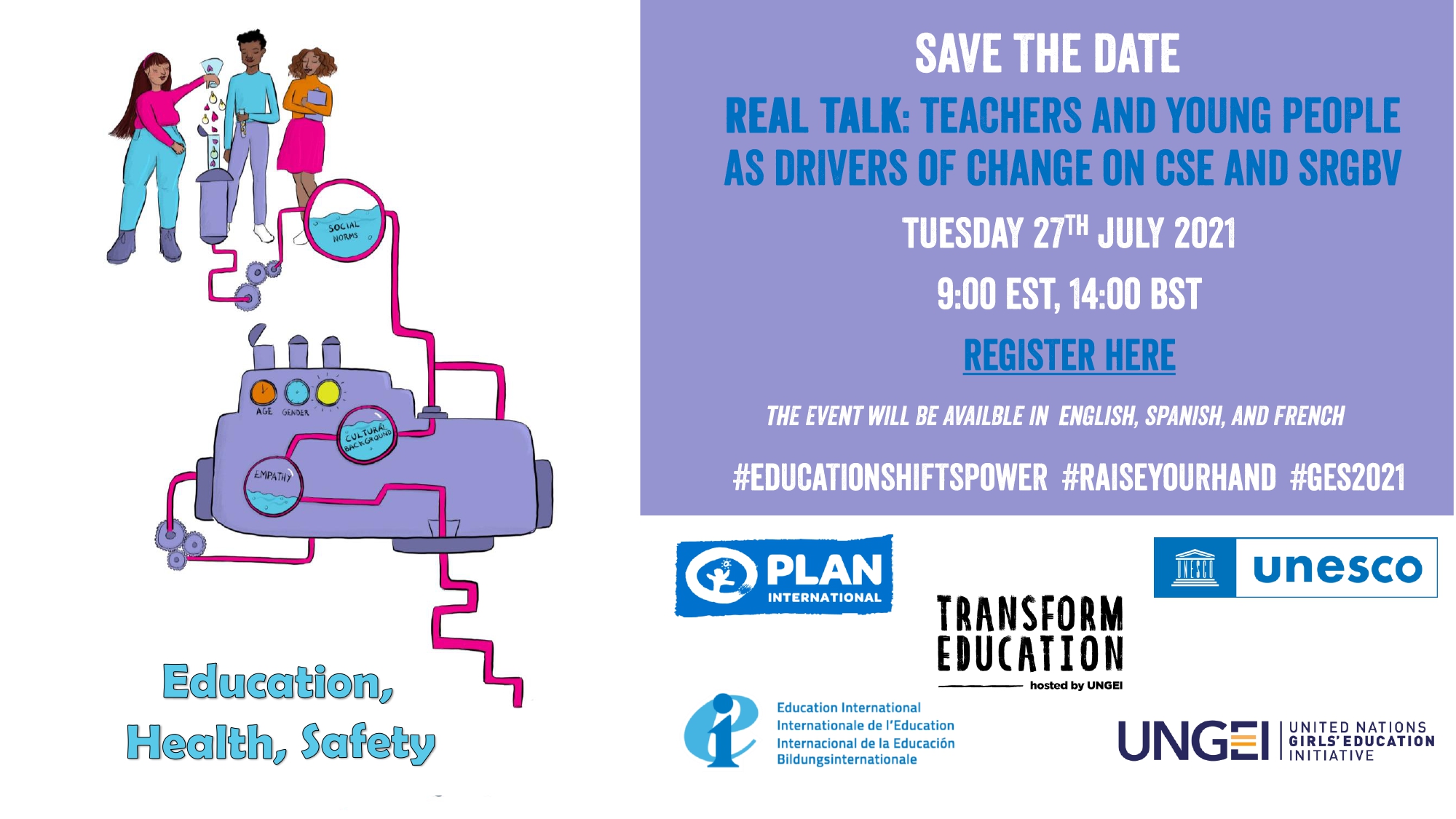Partnership approaches to eliminating SRGBV
An EU Development Days panel
At this week’s EU Development Days conference a panel of educationists representing a range of education-focused organisations shared experiences and expertise in approaches to tackling school-related gender-based violence (SRGBV). To set the scene, a short film by Plan International capturing harrowing testimonies of rape, abuse, exclusion, harassment, and many other forms of violence that characterise the daily lives of schoolgirls worldwide was screened. A poignant question emerged: if you knew your daughter could be subjected to such violence, would you risk sending her to school?
“Lisa was a pupil at school in Ghent who had just turned 16 when she committed suicide. After her death, her brother Thibault set up a Facebook page on which he made an emotional call to young people. He wrote: ‘My sister has taken her life because of bullying. Help me make sure it is not too late for someone else.’”
Annually, more than 246 million children experience gender-based violence (GBV) in and around schools. It’s a global crisis in which too many schools are anything but the safe and supportive learning environments they need to be for students to obtain a quality education. Rather, they are violent spaces from which young people, especially girls, are fleeing. As Haldis Holst of Education International observed, energy that students should be devoting to learning is instead consumed by vigilance, self-protection and fear.
The panellists, including Hendrina Doroba, Executive Director of FAWE; Haldis Holst, Deputy General Secretary of Education International; Anne-Brigitte Albrectsen, CEO of Plan International; Anna Murru, Partnership Manager of VVOB; and Nora Fyles, Director of UNGEI, spoke of a common resolve to shine a light on the gravity of the issue and the responsibility that all stakeholders share in addressing it. A number of approaches were recommended:
1. Engaging and collaborating with all stakeholders
“Parents, students, communities, the school leadership, they’re equally important, as are the national governments... It has to be a multifaceted approach and all have to be included”
- Anna Murru, VVOB
Approaches to addressing SRGBV must include everyone who has authority over children’s lives and learning experiences: policy makers, teachers, school managers, parents, students and their communities. GBV is a societal problem, reflecting deep rooted gender inequalities and power imbalances. Therefore, to address SRGBV, a whole school, whole community approach is needed. Programmes must be co-designed by government ministries and CSO partners, with local actors leading on delivery in a context appropriate way.
2. Moving beyond policy frameworks to binding commitments
"What kinds of changes are policies achieving, and are they making a difference in the lives of girls?”
- Nora Fyles, UNGEI
Global policy agendas and frameworks designed to address SRGBV, such as the Sustainable Development Goals (4.A), show international commitment to tackling violence in and around schools. However, such agreements are non binding. Without accountability mechanisms, implementation cannot be guaranteed. One possible solution is to make aid money conditional upon evidence of action on the ground that is effecting real and lasting change.
3. Breaking the silence
“The conversation about GBV in schools does not happen in many parliaments around the world… If we are deeply committed to breaking the silence… [it] has to be at the heart of any conversation.”
- Anne-Brigitte Albrectsen, Plan International
In too many countries, SRGBV is a taboo subject. To address it, the silence must be broken in parliaments, schools, homes and all the spaces in which children live and study. All stakeholders need to acknowledge the gravity of the issue, have a shared understanding of what SRGBV is, and agree upon a common message that violence is unacceptable. The role of mass media campaigns as a force for change cannot be underestimated.

4. Enlisting and supporting teachers as agents of change
“If you are going to reach the collective, all the teachers, the best way is to approach the unions and associations that work with them”
- Haldis Holst, Education International
Teachers and school managers are at the leading edge of addressing the harmful gender norms that give rise to SRGBV and protecting young people against it. Teachers’ unions can be mobilised to encourage collective action by influencing policy, creating learning spaces, and encouraging commitment to tackling SRGBV through shared values and codes of conduct. Developing teachers’ gender awareness, gender sensitive pedagogical approaches, and understanding of the critical role they play as agents of change is key.
5. Engaging men and boys
“I think we can do far more in schools to provide boys a space to understand and to respond to the dynamics in their environment.”
- Nora Fyles, UNGEI
Men and boys can be both victims and perpetrators of GBV, and need to be included in the conversation. By articulating how gender power manifests itself in their lives, they can recognise the role they play, whether subjected to, causing or failing to address the violence that too often results. Schools can provide a space for this learning, teaching boys appropriate behaviour and enabling them to take on the agenda by addressing unequal power dynamics in their communities.
6. Ensuring young people are at the centre of the agenda
“The more we support and fund young activists around the world, the more we render the change we want to see.”
- Anne-Brigitte Albrectsen, Plan International
Amplifying the voices of young people, and enabling them to shine a light on the many forms and effects of violence in their lives is of paramount importance. By speaking out to their communities, schools, parents and peers, young people can play a critical role in breaking the silence and effecting change. Programmes designed to tackle SRGBV must therefore place young people at the centre.
More to explore
#EndSRGBV
Real Talk: Teachers and Young People as Drivers of Change on CSE and SRGBV
 en
en 


 العربية
العربية Български
Български Hrvatski
Hrvatski Čeština
Čeština Dansk
Dansk Nederlands
Nederlands Suomi
Suomi Français
Français Deutsch
Deutsch Ελληνικά
Ελληνικά हिन्दी
हिन्दी Italiano
Italiano Română
Română Русский
Русский Español
Español Maltese
Maltese Zulu
Zulu አማርኛ
አማርኛ